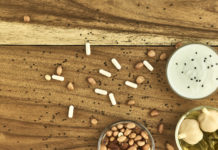The Dirty Dozen
EWG’s 2017 Dirty Dozen list singles out which produce contains the largest loads of pesticide residue. It is also important to note the foods are tested after they have undergone proper cleaning and in some cases, peeling. The Dirty Dozen are ranked from the most contaminated to the least and include the following:
- Strawberries
- Spinach
- Nectarines
- Apples
- Peaches
- Pears
- Cherries
- Grapes
- Celery
- Tomatoes
- Sweet Bell Peppers
- Potatoes
Key Findings
- More than 98 percent of samples of strawberries, spinach, peaches, nectarine, cherries, and apples tested positive for residue of at least one pesticide.
- A single sample of strawberries showed 20 different pesticides.
- On average, spinach samples had twice as much pesticide residue by weight than any other crop. Pesticides found include mold and mildew killers, a neurotoxic bug killer, and DDT (dichlorodiphenyltrichloroethane).
- Pears now rank sixth on the list, up from 22nd previously, with the amount of pesticide residues on pears more than doubled since 2010.
The Clean Fifteen
On the contrary, the Clean Fifteen are considered to be the “cleanest” of the crops, and include the following listed from the least contaminated, or lowest residues detected:
- Sweet Corn*
- Avocadoes
- Pineapples
- Cabbage
- Onions
- Frozen Sweet Peas
- Papayas*
- Asparagus
- Mangoes
- Eggplant
- Honeydew Melon
- Kiwi
- Cantaloupe
- Cauliflower
- Grapefruit
*A small amount of sweet corn, papaya, and summer squash (not listed) sold in the U.S. is produced from GMOs (genetically modified organisms). If concerned regarding or avoiding GMOs, buy organic varieties of these crops.
Key Findings
- Avocados and sweet corn were the cleanest, with only one percent of samples showing any detectable pesticides.
- More than 80 percent of pineapples, papayas, asparagus, onions and cabbage had no pesticide residues.
- No single fruit sample from the Clean Fifteen tested positive for more than four types of pesticides.
- Multiple pesticide residues are extremely rare on Clean Fifteen vegetables. Only five percent of Clean Fifteen vegetable samples had two or more pesticides.
How to Avoid Pesticides-Laden Fruits and Vegetables
First off, the listed Dirty Dozen fruits and vegetables is not by any means stimulated to lead you astray from consuming them, as fresh produce prevails over highly processed and refined foods that are filled with sugar, fat, salt, and other additives. Although more research is warranted to better understand pesticides on human health, it is important to raise awareness of pesticides. Research has shown their intake can provoke the risk of a number of health conditions, including brain and nervous system toxicity, cancer, hormone disruption, and skin, eye and lung irritation. Consumers can lessen their risk of consuming pesticides by purchasing organic produce when possible to not only reduce physical exposure, but to support environmentally friendly farming practices. While purchasing organic-everything is not always a feasible option, the EWG’s Shopper’s Guide to Pesticides in Produce aims to help consumers make the healthiest choices given individual circumstances. For more information on the foundation of EWG and their ongoing efforts here.









